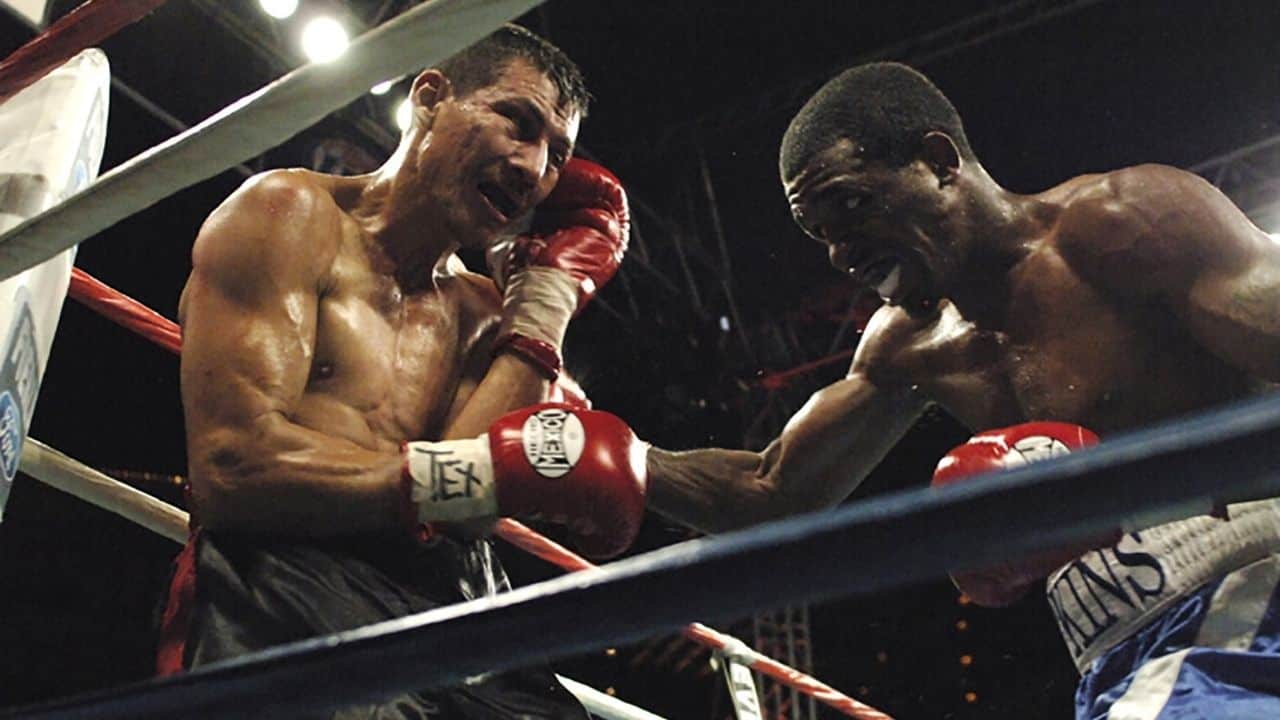Hey there! So, you’re starting your boxing journey – that’s awesome! I still remember lacing up my gloves for the first time in my living room about 15 years ago. It’s a fantastic workout, but before you start throwing those punches, we need to talk about something crucial: the warm-up.
Now, I know what you might be thinking – “Can’t I just jump right in?” Trust me on this one, you really can’t. An effective boxing warm-up for beginners isn’t just about getting your heart rate up; it’s a targeted sequence of dynamic movements designed specifically to prime your punching muscles, activate your footwork coordination, and drastically reduce injury risk, making your home boxing sessions safer and more powerful from the very first round. It’s the foundation for a great, injury-free workout.
In this guide, I’ll walk you through why warming up is non-negotiable for boxers, share my go-to 10-minute routine that’s perfect for beginners at home, point out common mistakes to avoid, and answer some frequently asked questions. Let’s get you ready to rumble safely!
Why Boxers Can’t Skip the Warm-Up (Especially Beginners!)
Think of your muscles like cold rubber bands. If you try to stretch them too far, too fast, they might snap. Warming up gently heats your muscles and joints, making them more pliable and ready for action. For boxing, this means:
- Fewer Injuries: This is the big one! Warm muscles are less likely to tear or strain when you’re throwing punches or moving your feet quickly. Warming up properly prepares your body for the demands ahead. Increased blood flow delivers more oxygen, making muscles more elastic.
- Better Punches and Movement: Warm muscles contract more forcefully and quickly. Mobilizing your shoulders and hips means smoother, more powerful punches and faster footwork. You’ll feel less stiff and more coordinated, helping to improve punching power and execute crisp boxing footwork warm up drills more effectively.
- Getting Your Head in the Game: The warm-up isn’t just physical; it’s mental. It helps you transition from your day-to-day thoughts into focusing on your workout, your form, and your breathing.
Quick Note: Dynamic vs. Static Stretching
You’ll notice my routine uses dynamic stretches – meaning stretches involving movement. We avoid static stretches (holding a position for a long time) before boxing. Why? Research suggests holding stretches for too long before intense activity can actually temporarily reduce your power and strength – not what we want before throwing punches! We save those longer holds for the cool-down. Dynamic stretching gets the blood flowing and prepares you for boxing movements much better. Learn more about dynamic stretching benefits
My Go-To 10-Minute Beginner Boxing Warm-Up Routine (Step-by-Step)
Alright, here’s the routine I’ve refined over the years. It takes about 10 minutes, needs minimal space (perfect for home workouts!), and gets everything ready. Remember to listen to your body – move smoothly, breathe steadily (generally exhaling on the main effort), and don’t push into pain.
Total Time: Approx. 10 minutes
Equipment Needed: None (Jump rope optional)
Step 1: Raise Phase (Get the Blood Pumping – 3 mins)
The goal here is to gently elevate your heart rate and start warming the body. Choose one:
Option A: Jump Rope (If you have one and space/skill)
- How: Keep feet close together, bounce lightly on the balls of your feet, turn the rope with your wrists, not your whole arms. Keep elbows tucked in. Breathe steadily.
- Beginner Tip: If you’re new to jump rope or don’t have one, do “phantom rope” – mimic the jumping motion while circling your wrists. It works just as well for warming up!
- Why for Boxing: Builds footwork coordination, timing, and cardio endurance – all crucial in the ring (even your living room ring!).
- Duration: 3 minutes (take short breaks if needed).
Option B: Jogging in Place / High Knees
- How: Start with a light jog in place. After a minute, transition to high knees, bringing your knees up towards your chest. Keep your core engaged and land softly.
- Beginner Tip: Focus on a steady rhythm rather than speed initially.
- Why for Boxing: Gets the heart rate up quickly and warms up the leg muscles needed for footwork and generating power from the ground up.
- Duration: 3 minutes (e.g., 1 min jog, 1 min high knees, 1 min jog).
Step 2: Activate & Mobilise Phase (Dynamic Stretching – 6 mins)
Now we get specific, waking up the key joints and muscles used in boxing. Move through these smoothly and remember to breathe.
1. Arm Circles (Forward & Backward – 1 min total)
- How: Stand with feet shoulder-width apart. Make small circles with your arms straight out to the sides, gradually making them larger. Feel the movement in your shoulder joint. Do 30 seconds forward, then 30 seconds backward.
- Why for Boxing: Warms up the shoulder joint (rotator cuff), essential for throwing all punches (jabs, crosses, hooks) and preventing injury.
2. Shoulder Rolls (Forward & Backward – 1 min total)
- How: Shrug your shoulders up towards your ears, roll them forward and down. Repeat for 30 seconds. Then, shrug up, roll them backward and down for 30 seconds. Focus on releasing tension.
- Why for Boxing: Releases tension in the upper back and shoulders (trapezius muscles), helping maintain a good guard position without straining.
3. Torso Twists (1 min)
- How: Stand with feet shoulder-width apart. Make small circles with your arms straight out to the sides, gradually making them larger. Feel the movement in your shoulder joint. Do 30 seconds forward, then 30 seconds backward.
- Why for Boxing: Warms up the shoulder joint (rotator cuff), essential for throwing all punches (jabs, crosses, hooks) and preventing injury.
4. Leg Swings (Forward/Backward & Side-to-Side – 2 mins total)
- How: Stand tall, holding onto a wall or chair for balance if needed. Swing one leg straight forward and backward in a controlled manner for 30 seconds (don’t force height, focus on smoothness). Repeat with the other leg. Then, face the wall/chair and swing one leg out to the side and across your body for 30 seconds. Repeat with the other leg.
- Why for Boxing: Improves hip mobility, vital for powerful kicks (if you do kickboxing) but also for effective footwork, pivoting, and generating power from your legs for punches.
5. Walking Lunges (Optional, if space – 1 min)
- How: Step forward with one leg, lowering your hips until both knees are bent at roughly 90 degrees. Ensure your front knee stays over your ankle and doesn’t collapse inward. Push off your back foot and step through into a lunge on the other side. Keep your chest up. (See visual cue below if needed).
- Why for Boxing: Warms up and strengthens the legs and glutes, improves balance – all needed for a stable boxing stance and powerful movements.
6. Light Shadow Boxing (Focus on Form – 1 min)
- How: Get into your boxing stance (feet shoulder-width apart, staggered, knees soft, hands up protecting your face). Throw slow, controlled punches: jabs (lead hand straight out), crosses (rear hand straight out, rotating hip/foot). Focus on snapping the punches out and retracting your hand quickly back to guard. Move your feet slightly, staying light. Exhale sharply with each punch.
- Why for Boxing: Activates the specific muscles and neural pathways used for punching and basic footwork. Reinforces good technique from the start.
Step 3: Quick Activation Burst (Final Gear-Up – 1 min)
This is a short burst to get your nervous system firing, priming you for faster movements. Choose one:
- Faster Shadow Boxing: Pick up the pace slightly on your jabs and crosses. Add in a few hooks or uppercuts if you know them, still focusing on form, but adding a bit more speed.
- Quick Feet Drill: Stay light on the balls of your feet and quickly shuffle your feet back and forth or side to side in your boxing stance, keeping hands up.
- Why for Boxing: Helps bridge the gap between warm-up and workout intensity. Improves reaction time and speed.
Common Warm-Up Mistakes Beginners Make (And How to Fix Them!)
Over my 15 years, I’ve seen beginners make the same few mistakes. Avoid these pitfalls!
- Doing Static Stretches First: Holding stretches like a toe touch before boxing can actually make you temporarily weaker.
- Fix: Stick to the dynamic, movement-based stretches in the routine above. Save static holds for your cool-down.
- Rushing Through Movements: Speeding through dynamic stretches without control defeats the purpose and can risk injury.
- Fix: Focus on smooth, controlled movements through the full range of motion for each exercise. Quality over quantity! Remember to breathe.
- Not Warming Up Long Enough (or Skipping it!): A quick 2-minute jog isn’t enough to prepare for the demands of boxing.
- Fix: Commit to the full 10 minutes. It’s a small investment for a much safer and more effective workout.
- Forgetting Boxing-Specific Moves: Just jogging doesn’t prepare your shoulders and core for rotation.
- Fix: Ensure you include torso twists and light shadow boxing to activate the specific muscles and movements you’ll use.
Pro Tip from Experience:
Try not to take a long break between your warm-up and your workout, especially if you’re at home where distractions can pop up. You want to start your main boxing session while your muscles are still warm and ready. Getting cold can negate the benefits!
Your Beginner Boxing Warm-Up FAQs
Let’s tackle some common questions I hear from beginners:
Q: How long should a beginner warm-up be?
A: Around 10-15 minutes is ideal. This gives enough time to raise your heart rate and mobilize your joints without causing fatigue before the main workout. Our routine hits that sweet spot at 10 minutes.
Q: Do I need special equipment?
A: Nope! This routine is designed for home workouts with just your bodyweight. A jump rope is optional for the cardio part, but the phantom rope works great too.
Q: What if I feel pain during the warm-up?
A: Stop the exercise causing pain immediately. Warm-ups should feel like gentle work, maybe mild discomfort as you move, but never sharp pain. Check your form; maybe you’re moving too fast or too far. If pain persists, avoid that movement and consider consulting a professional.
Q: Can I do this before every boxing workout?
A: Absolutely! Consistency is key. Making this routine a habit before every session will significantly benefit your training and reduce injury risk.
Q: How do I know if I’m warmed up enough?
A: You should feel slightly warmer, maybe breaking a light sweat. Your joints (shoulders, hips) should feel looser and less stiff. Your breathing will be slightly elevated but you shouldn’t be breathless. You should feel mentally focused and ready to start boxing.
Ready to Go the Rounds?
So there you have it – a simple, effective, boxing-specific warm-up perfect for beginners training at home. Remember, as we discussed, this isn’t just random movement – it’s targeted preparation crucial for preventing injuries and boosting your performance. Making this routine the essential first round of every workout will pay off hugely in your boxing journey.
Stay consistent, listen to your body, and have fun hitting those pads (or the air)!
Now, go get ’em!



